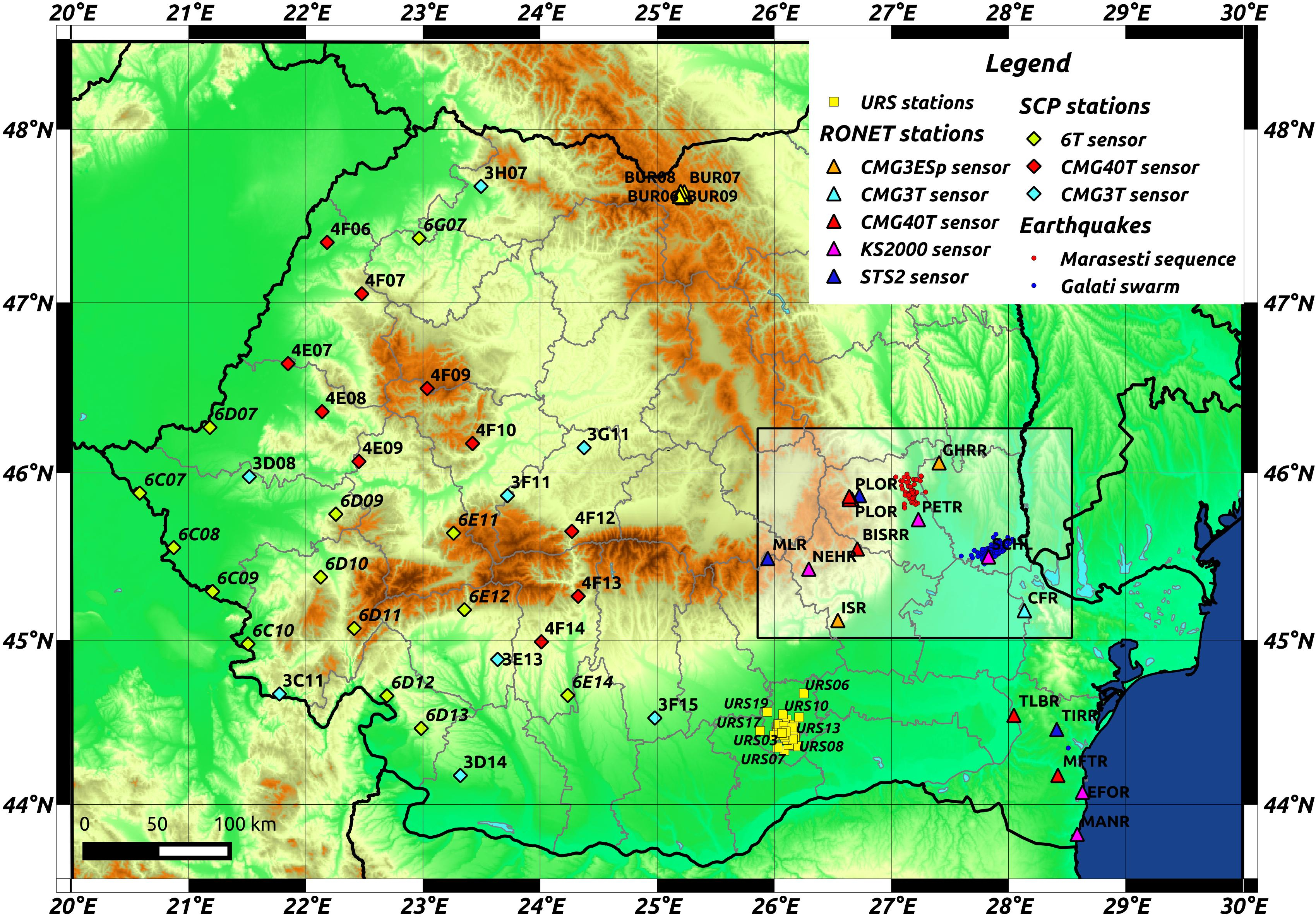Project description
Seismic noise represents small
amplitude ground motions that are recorded everywhere on the
surface of the Earth and are generated by anthropic and natural
factors such as traffic, industrial facilities, wind, oceanic
and coastal waves, etc. Since the noise measurements can be
performed anytime and everywhere, the importance of seismic
noise data in seismology has significantly increased in the last
twenty years. Thus, the use of noise data became very
important for site effects estimation, investigation of shallow
and deep structure of the Earth, understanding of processes as
atmosphere-ocean-seafloor coupling (Rhie and Romanowicz, 2004)
or climate changes (Stutzmann et al., 2009), seismic networks
operation and more recently, for studying the changes in the
medium velocity or evidence temporal physical changes in fault
zones (Wegler and Sens-Schönfelder, 2007; Berenguier, et al.,
2008).
The
REASoN project
focuses mainly on improving the knowledge of the nature and
origin of the ambient seismic noise wavefield recorded on the
Romanian territory. Continuous data recorded by four seismic
arrays (Plostina-PLOR
and Bucovina-BURAR
arrays are part of the Romanian Seismic Network, while the other
two are part of two temporary networks that were installed in
Bucharest area - URrban
Seismology
network - and in the western part of Romania -
South
Carpathian
Project
network) and 14 stations belonging to the Romanian Seismic
Network (Figure 1) will be used within the project in order to
understand the variations observed in seismic noise and how
these variations could affect the detection capabilities of
seismic networks, the H/V ratios computed in urban environments
or the dispersion curves obtained through cross correlations of
ambient seismic noise. The project also adresses a new challenge
for the seismic monitoring studies in Romania, i.e. the use of
ambient seismic noise to monitor an active seismic area where,
very recently, two seismic sequences occurred and caused some
minor damages and frightened the people living inside the area:
the swarm in 2013 from the Galati area with the main shock of
magnitude 3.9 and more than 300 aftershocks (blue dots in Figure
1), and the seismic sequence in 2014 close to Focsani area with
the main shock of magnitude 5.7 and more than 80 aftershocks
(red dots in Figure 1).

Figure 1. Distribution
of seismic stations and the target area for noise monitoring
